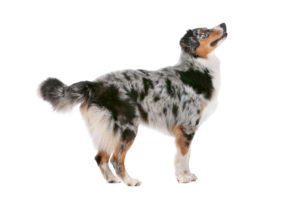We are all aware that some breeds, like the Australian shepherd, Rottweiler, Doberman, and the Viszla, have a tradition and/or standard of either a docked tail, cropped ears, or both. Recently, as more and more pet parents have begun to question whether we should do these alterations. And, in some places, such as many countries in Europe, they have already banned the procedures.
But there are those who say the alterations serve a purpose other than looks, and that they are thinking of the welfare of the dog by doing them. This article is here to educate our readers on both sides of this emotionally charged debate.
History of Alteration
Like most things that are controversial, the history on docking and cropping has become almost myth. If you ask any dog owner you meet on the street, you will hear things like people crop ears to make them appear “mean,” “to show they are a fighting dog,” or they dock tails because it enhances the “look” of the dog.
However, regardless of whether you agree with it or not, tail docking and ear cropping actually have their roots in ancient times and in function, not fashion.
The docking of tails began because working dogs (sporting or herding) where found to have an unusually high rate of injuries to this appendage in their daily lives. For example, Australian shepherds oftentimes suffered broken tails because they would be steps on by cows. Sporting dogs with tails often ended up with injuries from getting caught in thickets and underbrush while chasing game.
Ear cropping is a bit more of an enigma. Certainly the argument that it’s just for making the dog look more scary and intimating sounds legit. After all, the breeds that have this done are usually used for guarding or, in ancient times, games such as bear baiting. However, there is more to it than that. Traditionally, ears were cropped on dogs that were going to be used for a type of sport (like bear baiting or dog fighting) where their ears may have been bitten by the other animal.

Today’s Debate
Most dogs today, regardless of breed, are not being used for work. Whether they were bred for herding cattle or sheep, flushing fowls, or fighting off predators, most of them live in warm houses and spend their days at the park or doggy daycare.
Does that mean docking and cropping no longer have any place in our society?
The Pros
On the one side, let’s look at the Hungarian Vizsla as an example. They are a hunter, pointer and retriever which traditionally has 1/3 of the tail docked. While the remaining 2/3 is strong, the part that is docked is thin and whip-like and is open to damage in the field. The Vizsla holds its tail horizontal to the ground and wags it forcefully while charging through rough scrub and undergrowth.
Elizabeth Vagnoni, owner of Vagnoni Vizslas explains that, “The unprotected tip is docked to keep it from splitting and bleeding. Once damaged, the tail is extremely difficult to heal, sometimes requiring amputation later in life when the dog must be placed under general anesthetic causing undue stress and pain.”
Even if your dog is not being used for sport, Vagnoni’s vet has told her stories about how breeds with this type of tail often wag them so hard that they spilt them on a corner or furniture and they develop something called “Happy Tail.”
“The tail doesn’t have a lot of blood circulation and will often develop an infection and must be amputated,” Vagnoni said, “My vet says it’s awful when the dog splits their tail and wags it forcefully — blood flies all over the place.” She adds that she does not believe in cosmetic docking, but that some breeds need it to avoid an even more painful problem later on.
It is for this very reason, in fact, that gamekeepers in Scotland are asking for a LIFT on the ban of tail docking, due to the large number of injuries being sustained by sporting dogs with intact tails. However, they are asking that the ban only be lifted for dogs that are actually being used for a sport, and not just family pets. England, Northern Ireland, and Wales have similar exemptions in their alteration laws.
Ear cropping is done on breeds that are prone to infections in the ears, because it allows more air to get into the ear canal and makes cleaning them easier, thus saving the dog from painful ear problems and possible surgical procedures later on.
And, what could be considered the weakest argument, many believe the traditions should be kept up because they are the breed standard and part of what makes that breed that breed.
